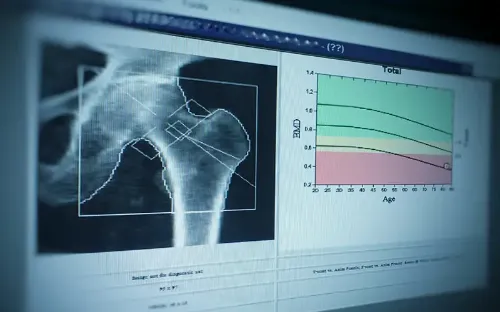Osteoporotic fracture
"A sudden and intense back pain, not related to any specific damage, may indicate that a vertebral fracture has been suffered".
DR. MATÍAS ALFONSO
SPECIALIST. ORTHOPEDIC SURGERY AND TRAUMATOLOGY DEPARTMENT

Osteoporotic fractures of bones affecting the spine are called vertebral fractures or compression fractures.
Misconceived as a "normal" part of aging, the stooping that occurs from multiple fractures causes chronic pain, reduces quality of life, and increases the risk of more fractures.
After having had the first vertebral fracture, the risk of suffering another fracture is three to five times greater than before, because the broken bone affects the distribution of weight along the spine.
About two-thirds of the vertebral fractures related to osteoporosis go undiagnosed.

What are the symptoms of osteoporotic fracture?
Fractures can occur as a result of normal activity, such as bending over or holding something.
Multiple vertebral fractures can cause a forward curvature of the spine (kyphosis). With each additional fracture, the spinal curvature can become more pronounced, painful, and debilitating.
Severe kyphosis has a compressive effect on your organs that progressively impairs your ability to breathe, walk, eat or sleep. Lung capacity is reduced and mobility may become limited. Sleep disorders are common in cases of pronounced kyphosis.
The most common symptoms are:
- Deviation of the spine (kyphosis).
- Pain.
- Functional inability to breathe, walk, eat or sleep.
Do you have any of these symptoms?
You may have suffered a fracture due to osteoporosis
How is osteoporotic fracture diagnosed?

In diagnosing an osteoporotic fracture, a thorough physical examination, along with an x-ray and/or magnetic resonance imaging (MRI), can help your doctor differentiate between pain caused by a vertebral fracture and pain caused by other disorders.
The loss of alignment caused by a fractured vertebral body puts more pressure on adjacent vertebrae, resulting in a weakened structure that is more vulnerable to further fractures.
How is osteoporosis fracture treated?
Traditional treatment of vertebral fractures includes prolonged bed rest, pain medication and the use of corsets.
These treatments can reduce pain, but they do not stabilize the fracture or correct the corresponding vertebral deformity.
Currently, balloon kyphoplasty can be used.
Balloon kyphoplasty is a minimally invasive treatment option for patients with vertebral compression fractures.
In this procedure, orthopedic balloons are used to repair a vertebral fracture. Bone cement is then used to create an internal mold to stabilize the fracture.
- A small, one-centimeter incision is made in the back and creates a tiny duct in the fractured bone.
- A small balloon is inserted into the fractured bone.
- The physician then carefully inflates the balloon to correct the deformity and collapse of the vertebrae.
- The balloon is then removed, leaving a cavity in the vertebra.
- This cavity is filled with bone cement to support the bone, stabilize and fix the fractured vertebra.
- Balloon kyphoplasty is a percutaneous procedure that can be performed on an inpatient or outpatient basis. It also requires little or no post-operative rehabilitation.
This procedure has been shown to significantly improve the patient's quality of life and ability to perform daily activities.
It also reduces the number of days lost due to bed rest.
Where do we treat it?
IN NAVARRE AND MADRID




